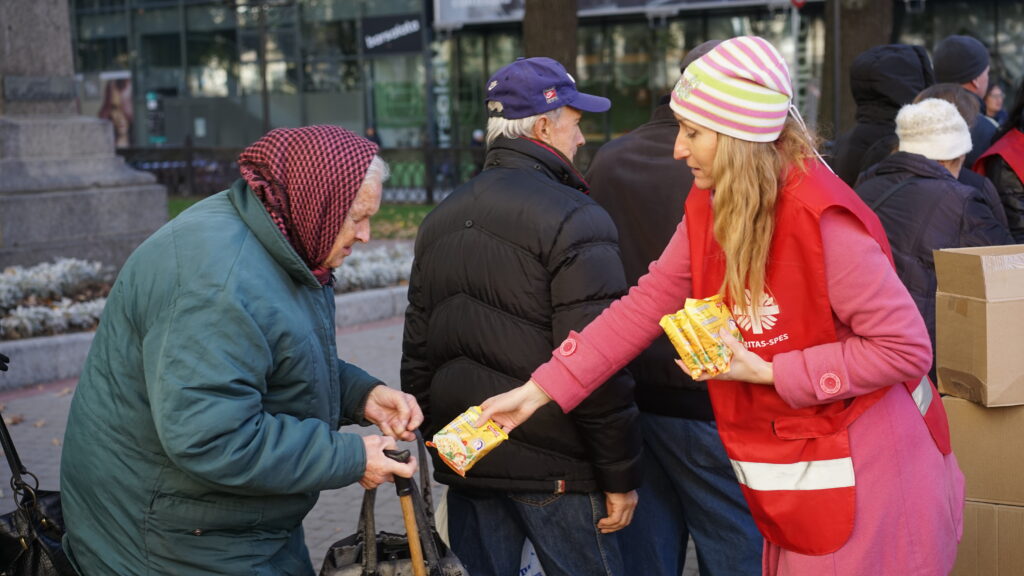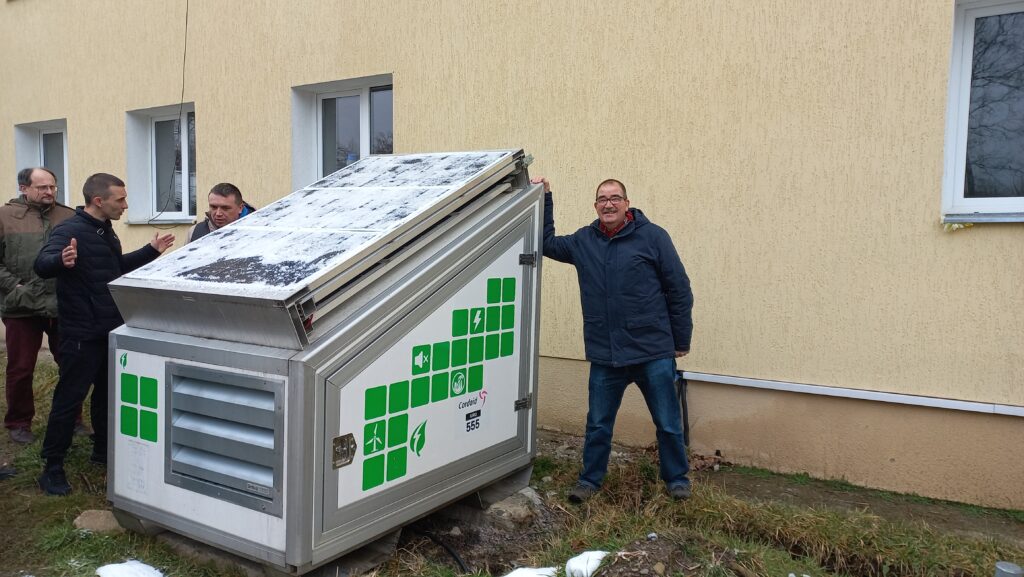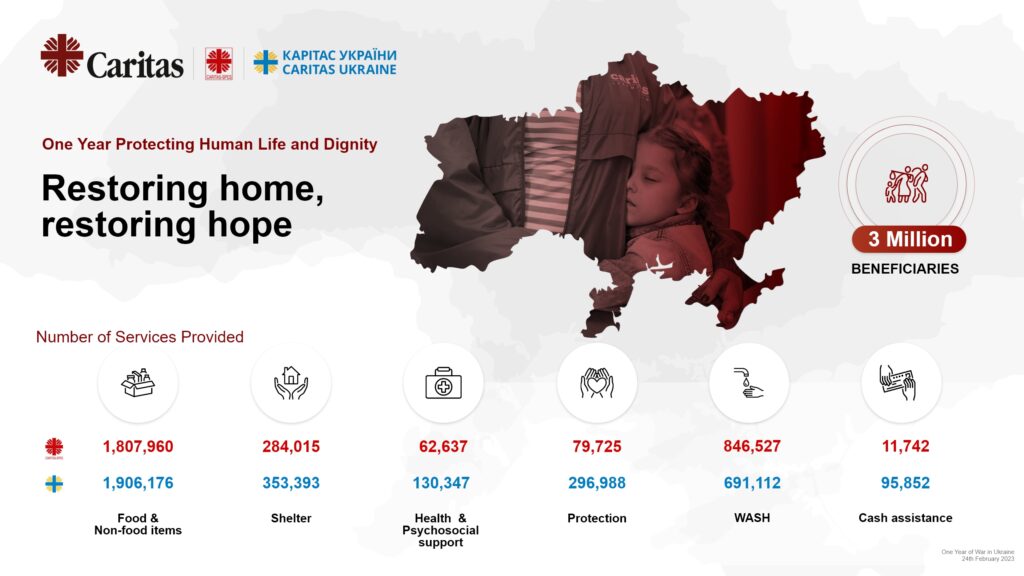Paul Borsboom is closely involved in the humanitarian operation by Cordaid’s partners in Ukraine. For three weeks, he travelled through the country and witnessed how the staff and volunteers of the Caritas network are working around the clock to support the victims of the war.

Now that the full-scale war in Ukraine is entering its second year, aid workers are evaluating their efforts. They discuss what activities will still be necessary for the coming period and how foreign aid organisations can contribute to this. As a humanitarian expert, Paul Borsboom has met dozens of Ukrainian colleagues in recent weeks. In this interview, he talks about his experiences in this severely hurt but still very combative country.
The situation in Ukraine is still quite unpredictable and downright dangerous in some parts. What was it like travelling around there?
‘When we arrived in Drohobych, a town in the relatively quiet western part of the country, the air raid siren went off and we had to go straight to the shelter. That immediately confronts you with the harsh reality. I mainly thought: now we can’t do our job. Luckily, it wasn’t too bad. The shelter also functioned as the canteen of our partner organisation’s office, so we could just eat there and in the meantime also have meetings with our colleagues. Further east you can really see the effects of the war, but we had no problems along the way.’
‘I believe our colleagues can keep this up for another while, although we do notice that they are still way too busy. But whether they could handle it if the situation were to get even more intense, I don’t know.’
Can you give some examples of the relief activities you saw during your visit?
‘In Drohobych they have set up a health centre for people who cannot access the regular health care system. These are usually displaced persons, the elderly or people with disabilities. In Kmelnytsky in the middle of the country, and in Irpin, near Kyiv, they were distributing food and hygiene products, as is happening all over the country. There are also soup kitchens for hot meals in several places, as we saw in Zhytomyr. The distances in Ukraine are huge, so it’s difficult to visit all the places where we support activities, but I believe I got a good overview of what’s being done.’

What kind of challenges do aid workers in Ukraine face? And how do they deal with them?
“The violence in the east of the country continues and many displaced people are still arriving in the shelters. Furthermore, it is very cold in the winter and that causes all kinds of problems. At the locations where we distribute goods, sometimes there are long queues where people stand outside and are at risk due to the extreme temperatures. Our colleagues came up with a simple but great solution for this: people can reserve a time slot via an app so that they don’t have to wait outside for too long.’

Do you have any idea what the situation will be like for Ukrainians a year from now? In other words, is it possible for aid workers to anticipate the near future?
‘It is very difficult to look ahead. Our partners continue to ask for support for emergency aid and for setting up the health centres. The Ukrainian healthcare system allows this. In addition to the support from abroad, local organisations can also apply for a subsidy from the government. This shows that they are also thinking about how to proceed. We can continue to play our role by supporting people who cannot afford the care. Another important issue that our partners point out is that we have to support people with jobs so that they can generate an income again.’
‘It may sound strange, but peace can also cause certain problems. You must have a good exit strategy, which can be quite a challenge.’
A few weeks after last year’s invasion, we already started receiving messages from Caritas colleagues who were struggling. They were supporting people non-stop, while they themselves were often affected by the war as well. How are they doing now?
‘It is still difficult for them, but many have also adapted to the circumstances. People try to take care of themselves and take some time off on the weekends. In a way, they are also getting used to the situation. The volunteers and staff in the centres for displaced persons have found their structure and rhythm. The volunteer group is also expanding. I believe they can keep this up for another while, although we do notice that they are still way too busy. But whether they could handle it if the situation were to get even more intense, I don’t know.’
Watch this video in which Tetiana Stawnychy, the president of Caritas Ukraine, looks back on the past year:
Suppose that – however unlikely – peace returns to the country in the short term, what would that mean for the work of our Ukrainian colleagues?
‘It may sound strange, but peace can also cause certain problems. You must have a good exit strategy, which can be quite a challenge. A lot of money is now coming in from abroad and there is great solidarity with Ukraine. But if the focus wanes, or perhaps even disappears, they will have to stand on their own two feet again, while humanitarian assistance will still be needed for many years to come. As an aid organisation, you need to think carefully about the role you can still play and how to fund this. Fortunately, they are already thinking about this issue a lot. The fact that they are thinking about the future in this way, makes me hopeful.’
